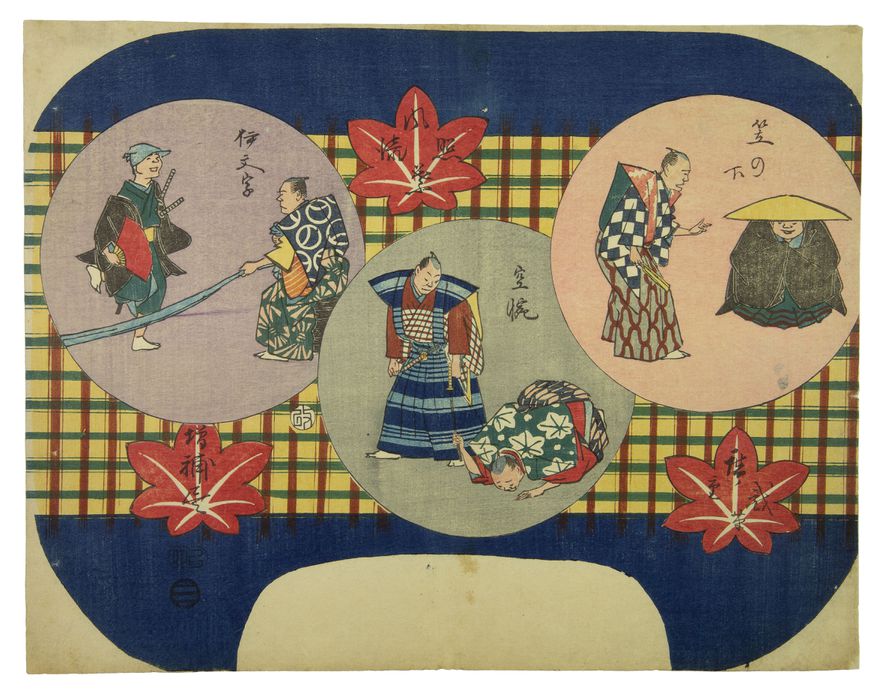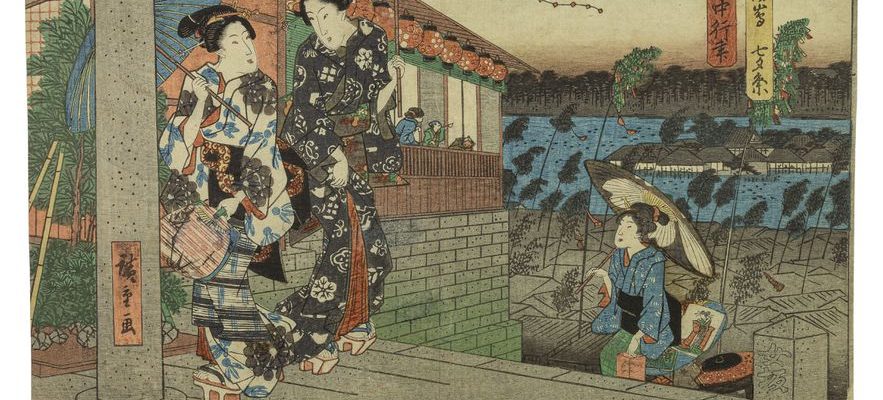“Look at the Japanese, they are masters of fans; their screens are of exquisite taste and their screens of prodigious originality…”, writes the author and illustrator Gustave Fraipont in one of his many books, The Art of composing and painting the fan, the screen, the folding screenpublished in 1895. Utagawa Hiroshige (1797-1858), one of the last masters of theukiyo e from the Edo period, is then among the heirs of these Japanese legends who raised the genre to the rank of art, by constituting, from the first hour, the most elaborate production. Alternately ceremonial, utilitarian, martial, decorative or advertising, the fan, which only exists for one season, had multiple functions, until giving rise to the status of “master fan maker” from the end of the 17th century, giving the printed object a real feminine fashion accessory. The Ibaya Senzaburô house, founded in 1792, is the last to have ordered fans from Hiroshige. Today she is the last to work in Tokyo.
Under the aegis of its new president Yannick Lintz, the Guimet museum in Paris is showing these prints for the first time in France. In the role of expert curator: Christophe Marquet, Japanese art historian, specialist in the 18th and 19th centuries. In that of the lender: Georges Leskowicz, prolific collector of Japanese prints. Here, we discover the Edo uchiha (Edo fan), in the shape of an ellipse, whose entire structure is made from the same bamboo cane. Appeared in Japan in the 1810s, it serves as a support for Hiroshige’s engravings. From this period, few fan leaves remain mounted on their original frame. “Most of the engravings that have come down to us are uncut specimens, in their first printing, which had probably been kept as models by the publishers for possible subsequent orders, if not as archives”, explains Christophe Marquet. The freshness of the colors, the quality of the gradations and, sometimes, the binding holes in the margins, seem to suppose that these compositions were kept bound in albums by dealers or collectors, thus preserving them from light.
Utagawa Hiroshige, “The Tanabata Festival at Yushima”, series “Annual Festivities at Famous Sites in Edo”, circa 1837-1844.
/ © Fundacja Jerzego Leskowicza
Hiroshige features abundantly the “famous sites” (meisho) of Edo, including the Yoshiwara district, a key place for nocturnal pleasures in the eastern capital, through three seasonal themes – Snow, Moon, Flowers. His trademark – landscape prints – does not prevent him from foraging elsewhere, such as with female portraits, close-ups or blended into a group, some of which he refers to religious rituals. Thus these three young girls operating back and forth in a temple to solicit an altruistic wish, while in the background pennants are displayed with the names of storytellers, actors, writers and artists. Or this trio of women practicing an entertainment from a kabuki play represented on the boards in 1847: the famous game of hands, around a jug of sake, at the end of which the loser must drink a cup.

Utagawa Hiroshige, “Fashionable Teriha Pieces. Suite”: “The Monk Who Lodges Under a Hat”, “The Servant with Dummy Strength”, “The Place That Begins with ‘L'”, 1857.
/ © Fundacja Jerzego Leskowicza
The parodic scenes also have their place in the sheets of Hiroshige who practices the mitate (transposition) mixing literary references and comical situations. Just like plants and animals, actors in their own right in its process, always referring to the Japanese anthology, like the oldest, The Collection of Ten Thousand Leaves. “My engravings are only the setting in the net of sketches on the ground reproducing as such the panoramas that I had before my eyes”, said, modestly, the stamper in the wind.
